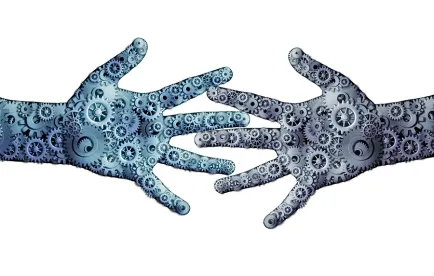This is the last article in our three-part series focused on the implications of robots and artificial intelligence (AI) in the workplace and potential areas of risk and exposure for employers (see Part I and Part II). We focus on three additional areas of importance for employers: (1) privacy; (2) protection of trade secret and intellectual property; and (3) contractual considerations, most especially loss and insurance coverage concerns.
Privacy
Many U.S. companies are familiar with the European Union’s General Data Protection Regulation (more commonly known as GDPR), which created a multitude of additional privacy considerations and compliance requirements relative to individuals’ personal data. Indeed, many of these concepts have transitioned to California’s Consumer Privacy Act, where it remains unsettled as to whether – and to what extent – data privacy obligations extend in the employment context. As AI and data analytics continue their fast-paced evolution, it is likely that federal and state laws will continue to layer privacy protections on the information collected to enhance critical metrics, such as employee productivity. The expanding adoption of robots and AI in the workplace promises to add to the complexity of this already labyrinthine and highly technical area, regardless of the employer’s or employee’s location. For example, technology such as wearable exoskeletons and other biometric devices are capable of collecting and transmitting personal data, raising issues as to wearer notice and consent. Similarly, the use of AI and automated decision-making in employee recruitment – which is already garnering the attention of states such as Illinois – triggers issues of notice and consent, in addition to separate concerns as to algorithm-based bias.
Employers must ensure compliance with these laws, rules, and regulations, which may vary depending on the location of the employer and employee, the type of information being collected, the reason for its collection, the method in which it is transferred, how it is stored, and for how long. Additionally, if there is a breach of this information, employers will be subject to a host of other regulations, including notice requirements.
Protection of Trade Secrets and IP
Regardless of industry and type, a company’s trade secrets and IP are among their most – if not “the” most – valuable assets and must be protected. When an employer brings robots and AI into its workplace, it may necessarily need to transfer confidential and proprietary information (including trade secrets) to the vendor or provider to ensure that the technology does what the company needs it to do. Of course, these same vendors may also be providing services for industry competitors, underscoring the need for protection. This area of exposure exists whether technology is installed on a permanent basis or whether a robot is brought in to perform a discrete, time-limited task (such as laying a floor or assembling a machine).
An employer has a number of options for protecting its information, including non-disclosure agreements, confidentiality agreements, licenses, and non-competes, and should ensure that the option or options that it chooses are tailored to meets its specific requirements and adequately protect the information that the employer seeks to protect.
Contracts and Insurance
A final issue to place on employers’ radars relates to contractual agreements with vendors and providers. While an employer may be skilled in negotiating supply or purchase agreements, agreements involving the use, installation, or purchase of robots and AI require special attention to provisions relating to allocation of risk, responsibility for operation and maintenance, warranties, indemnification, and insurance. For instance, if a company brings in a robot to lay a floor, is operating the robot included? Is maintenance? What happens if an employee or third party is injured by the robot? Identifying these issues and making them part of the purchase/contract negotiations process can save an employer from both surprise and liability later.
Conclusion
Robots and AI in the workplace have already begun to affect employers and will only continue to do so. In many cases, the precise effects of these still-developing technologies have yet to be fully realized. Employers can expect to feel these effects as they introduce robots and AI into their companies and can be in front of the curve by assessing their current and future operations as they relate to the considerations outlined in this series of articles.



 />i
/>i

